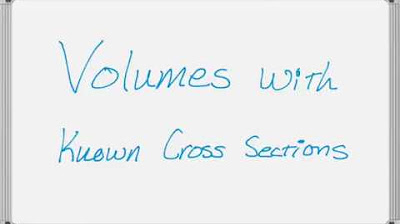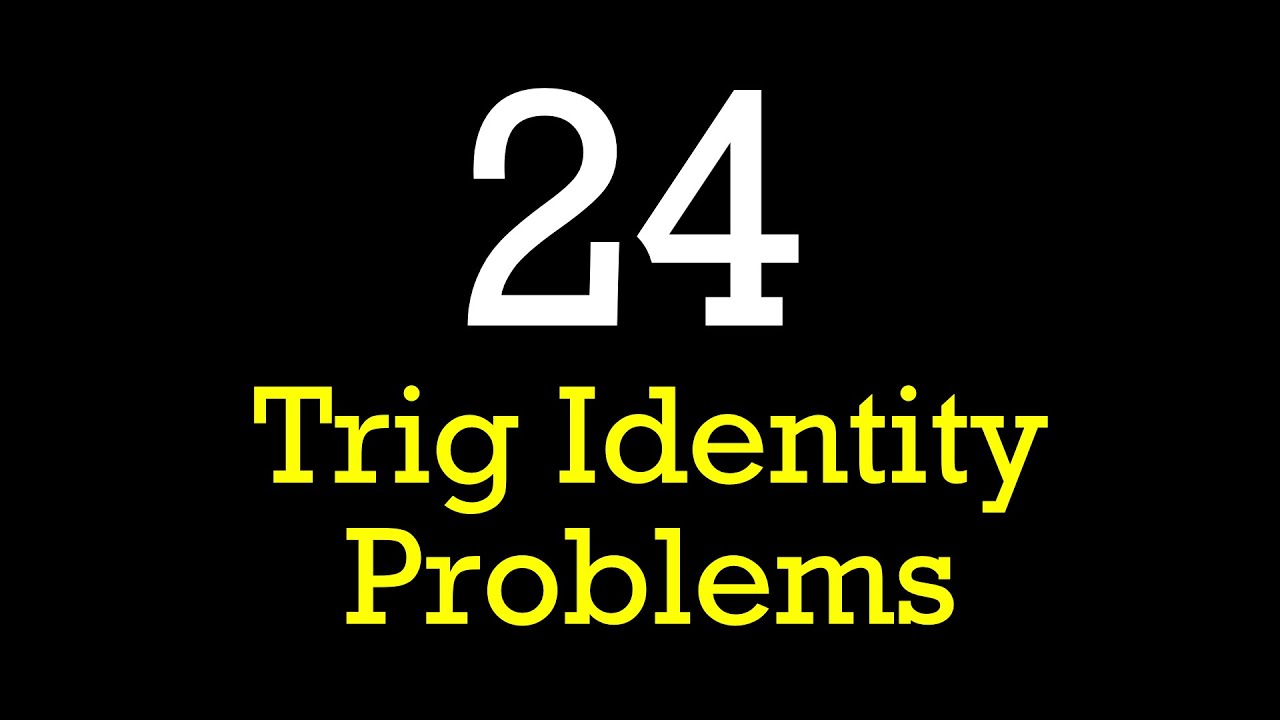SAT Math Tips Tricks and Strategies!
TLDRThis video tutorial offers essential strategies for tackling the math section of the SAT exam. It guides viewers through solving equations and geometry problems, such as finding the value of expressions and the area of shapes like squares and triangles. The instructor demonstrates step-by-step solutions, including using the Pythagorean theorem and properties of special right triangles. The video also suggests using the process of elimination for multiple-choice questions and provides resources for further practice on Patreon.
Takeaways
- 📚 The video provides strategies for tackling math problems on the SAT exam.
- 🔍 The first example demonstrates solving for 'x' in a linear equation and then using it to find the value of a different expression.
- 📉 The second problem involves solving a complex equation by cross-multiplying and simplifying to find the value of 'y'.
- 📝 The video emphasizes the importance of writing down steps to avoid mistakes in geometry problems.
- 📐 The Pythagorean theorem is used to find the side length of a square given the length of its diagonal.
- 🔑 The area of a square is calculated by squaring the side length, which is derived from the diagonal.
- 📈 For multiple-choice problems, plugging in answer choices can be an efficient way to find the correct solution.
- 📊 The video explains how to solve a problem with a right triangle by using the properties of a 45-45-90 triangle to find the area.
- 📉 The area of a right triangle is found using the formula (1/2) * base * height, which requires identifying the correct base and height.
- 📏 The video introduces the concept of similar triangles to find missing side lengths in a 30-60-90 triangle.
- 🔢 The final example shows how to calculate the area of a triangle using the lengths of its sides, derived from the properties of special right triangles.
Q & A
What is the first strategy discussed in the video for solving math problems on the SAT exam?
-The first strategy discussed is to solve for the variable in the given equation and then plug it into the second expression to find the value.
What is the value of x in the equation 5x + 8 = 23?
-The value of x is 3, which is found by subtracting 8 from both sides to get 15, and then dividing by 5.
What is the value of 7x - 4 when x is 3?
-When x is 3, the value of 7x - 4 is 17. This is calculated by multiplying 7 by 3 to get 21 and then subtracting 4.
How does the video suggest solving the equation 60/y + 8 = 15/(y - 1)?
-The video suggests using the cross-multiplication method to solve the equation, which involves multiplying both sides by the denominators to eliminate the fractions.
What is the value of y in the equation 60/y + 8 = 15/(y - 1) after cross-multiplying and simplifying?
-The value of y is 4, which is found after cross-multiplying, simplifying the equation, and solving for y.
What is the value of 5y/4 when y is 4?
-When y is 4, the value of 5y/4 is 5, as the y's cancel out in the expression.
How does the video recommend solving multiple-choice problems where an equation is given and the value of an expression is asked?
-The video recommends plugging in the answer choices to see which one satisfies the equation, which is a quicker method for multiple-choice questions.
What is the correct answer choice for the equation x + 5 squared equals x - 1 squared, according to the video?
-The correct answer choice is D, which is -2, as it is the only value that satisfies the equation when plugged in.
How does the video explain finding the area of a square given the length of its diagonal?
-The video explains using the Pythagorean theorem to find the side length of the square, and then squaring it to find the area.
What is the area of a square with a diagonal of 14 units, according to the video?
-The area of the square is 98 square units, found by applying the Pythagorean theorem to the diagonal and calculating the side length squared.
How does the video approach solving for the area of a 45-45-90 right triangle when given one side length?
-The video uses the properties of a 45-45-90 triangle, where the legs are equal in length and the hypotenuse is √2 times the length of a leg, to find the area using the formula (1/2) * base * height.
What is the area of a 45-45-90 right triangle with a leg length of 10 units?
-The area of the triangle is 50 square units, calculated as (1/2) * 10 * 10.
How does the video solve for the area of a 30-60-90 right triangle given the hypotenuse?
-The video uses the properties of a 30-60-90 triangle to set up proportions to find the lengths of the other two sides, and then calculates the area using the formula (1/2) * base * height.
What is the decimal value of the area of a 30-60-90 right triangle with a hypotenuse of 20 units?
-The decimal value of the area is approximately 86.60 square units, calculated by finding the lengths of the base and height using proportions and then applying the area formula.
Outlines
📚 SAT Math Strategies and Problem Solving
This paragraph introduces basic strategies for tackling math problems on the SAT exam. It demonstrates solving a linear equation and a fraction-based equation, emphasizing the importance of finding the variable's value first before substituting it into a given expression to find the solution. The example problems include finding the value of 'seven x minus four' after solving for 'x' in a simple equation, and a more complex fraction equation that requires cross-multiplication and distribution to solve for 'y'. The paragraph encourages practice and understanding of these principles for successful SAT math performance.
🔍 Multiple Choice Problem Solving Techniques
This section discusses two methods for solving multiple choice problems on the SAT: the short way of plugging in answer choices and the long way of fully solving the equation. It illustrates the short method by quickly eliminating incorrect answer choices for a given equation through substitution, ultimately identifying the correct one. The long method involves expanding and simplifying the equation step by step, using algebraic manipulation to isolate the variable and solve for its value. The paragraph also promotes the use of the short method for quick problem-solving but advises understanding the long method for comprehensive knowledge.
📏 Geometry Problem Solving with the Pythagorean Theorem
This paragraph focuses on solving geometry problems, specifically finding the area of a square given the length of its diagonal. It suggests drawing a diagram and using the Pythagorean theorem to relate the square's sides to its diagonal. The process involves setting up an equation based on the theorem, simplifying it to solve for the side length, and then calculating the area as the side length squared. The paragraph emphasizes the importance of writing down steps to avoid mistakes and provides a clear example of how to approach such geometry problems.
🔺 Solving Right Triangle Problems Using Properties
This section covers solving right triangle problems, particularly when given an angle measure and a side length. It explains how to determine the area of a 45-45-90 triangle by recognizing it as an isosceles right triangle and using the formula for the area of a triangle (1/2 base times height). The paragraph also discusses the importance of drawing diagrams for geometry problems and provides an example of calculating the area of a 30-60-90 triangle using the properties of special right triangles and proportions.
📐 Applying Geometry Formulas to Find Triangle Areas
The final paragraph discusses the process of finding the area of a right triangle when the lengths of the base and height are not directly given. It introduces the concept of using similar triangles and the properties of a 30-60-90 triangle to set up proportions and solve for the unknown sides. The paragraph demonstrates how to calculate the lengths of the base and height, then applies the area formula for a triangle to find the solution. It concludes with instructions on using a calculator to find the decimal equivalent of the area, rounding the final answer for practical purposes.
Mindmap
Keywords
💡SAT exam
💡Algebra
💡Equation
💡Variable
💡Cross-multiply
💡Pythagorean theorem
💡Geometry
💡Area
💡Right triangle
💡Proportion
💡Square root
Highlights
The video covers basic strategies for the math section of the SAT exam.
A step-by-step solution for a common SAT math problem involving solving for x and substituting it into another expression.
The demonstration of solving the equation 5x + 8 = 23 to find the value of x, resulting in x = 3.
How to find the value of 7x - 4 using the value of x found from the previous equation.
An introduction to a similar problem involving solving for y in a complex fraction equation.
The method of cross-multiplying to solve for y in the equation 60/y + 8 = 15/(y - 1).
Solving for y and finding the value of 5y/4 using the value of y obtained from the previous steps.
The concept of plugging in multiple choice answers to quickly find the solution to an equation.
Elimination of incorrect answer choices by testing them against the equation x + 5 squared equals x - 1 squared.
The correct answer choice d is identified as the solution to the equation through the process of elimination.
An explanation of the long method for solving the equation, including expanding and simplifying.
The use of the Pythagorean theorem to find the side length of a square given the length of its diagonal.
Calculation of the area of a square using the side length derived from the diagonal.
The area of a 45-45-90 right triangle is calculated using the lengths of its sides.
A strategy for solving geometry problems by drawing figures and applying known formulas.
The calculation of the area of a right triangle using the lengths of its base and height found through similar triangles.
Conversion of the area from a radical form to a decimal for practical application.
A call to action for viewers to check out the Patreon page for more SAT math problems and solutions.
Transcripts
Browse More Related Video

How To Calculate The Missing Side Length of a Triangle

Calculus Integrals for Volumes with Known Cross Sections

Ultimate trig identity problem study guide!

AP Calculus AB/BC Multiple Choice Practice Test (2012 AP CED Problems)

Calculator Techniques FOR BOARD EXAM - Evaluating Functions and Simplifying Expressions 10 EXAMPLES

Volumes with Known Cross Sections with Calculus, pg 2
5.0 / 5 (0 votes)
Thanks for rating: